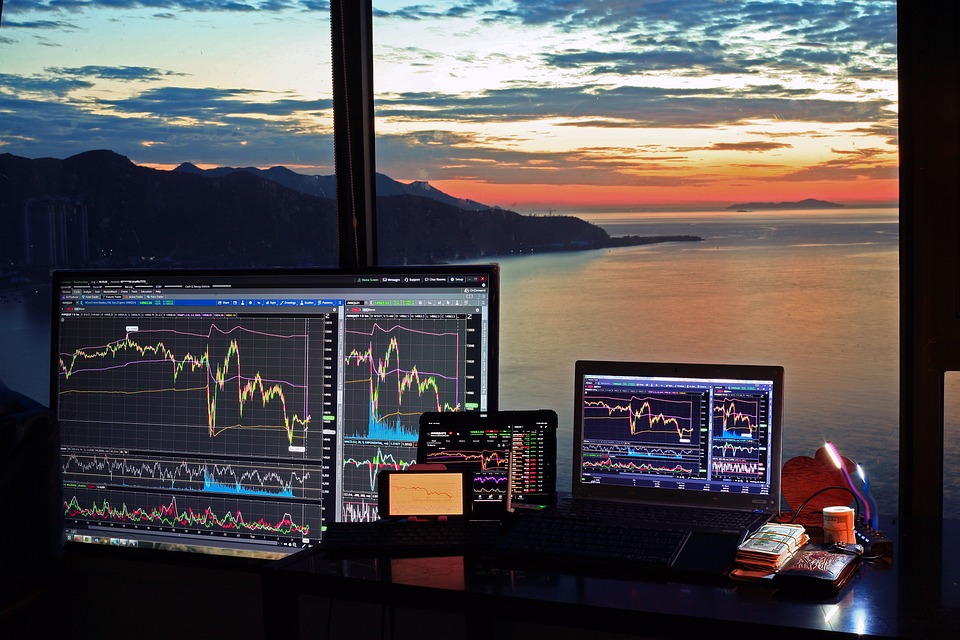If you’re looking to understand the future potential of HDFC Bank’s share price by 2025, you’ve come to the right place. I believe that setting a price target is crucial for anyone interested in the stock market, whether you’re a seasoned investor or just starting out. In this article, I will guide you through the factors that could influence HDFC Bank’s stock performance and what analysts are saying about its prospects. I feel confident that by the end of this article, you will have a clearer picture that will help you make informed decisions regarding your investments.
Having spent the past seven years delving into the intricacies of the stock market since 2017, my experience has allowed me to develop a keen insight into what drives share prices, especially for major players like HDFC Bank. I aim to provide you with valuable information that reflects my expertise in analyzing various financial indicators and trends. While I won’t be offering any direct trading or investment tips, I think it’s important for us to share our knowledge so you can conduct your own research and feel empowered to navigate the world of stocks with confidence.
HDFC Bank Share Price Target 2025: Insights and Predictions
Understanding HDFC Bank’s Current Position
In the vast realm of banking, HDFC Bank stands as a colossal entity, renowned for its robust services and customer-centric approach. Over the years, we have witnessed the diligent efforts of HDFC Bank in ensuring not only profitability but also reliability. My opinion is that the bank’s impressive financial results and its steadfast reputation amidst fluctuating market conditions have positioned it favorably for a promising future. As an investor, staying updated on the stock’s performance is vital, especially when contemplating targets for 2025.
When examining the trajectory of HDFC Bank, it becomes clear that its diverse portfolio and modern banking practices have played a pivotal role in its success. Throughout our experience in the stock market, which spans over seven years since 2017, we’ve observed how HDFC Bank continuously adapts to market demands. This adaptability suggests that the bank could navigate potential economic turbulence while maintaining robust performance, making it an intriguing prospect for long-term investors.
Macroeconomic Factors Influencing Share Price
Macroeconomic factors significantly impact a bank’s share price, and HDFC Bank is no exception. Interest rates, inflation, and overall economic health determine investment flows. I think that in the coming years, as India’s economy is projected to grow, HDFC Bank could benefit from increased lending and higher demand for financial products. This growth may also reflect positively on its stock price, potentially pushing it to new heights by 2025.
Moreover, the government’s policies and global economic conditions cannot be ignored. Consider the changes in regulatory frameworks that might either facilitate or hinder banking operations. In my view, if HDFC Bank navigates these waters adeptly, it would bolster investor confidence. This could result in a favorable share price target, allowing the bank to capitalize on its competitive advantages while remaining resilient in changing times.
Technological Advancements and Their Impacts
In this era, technological prowess translates to efficiency and customer satisfaction in banking. HDFC Bank has consistently embraced innovation, incorporating advanced technologies into its operations. Whether it’s enhancing online banking or providing seamless payment solutions, the bank’s forward-thinking approach seems to resonate well with the younger demographic. I believe that continued investment in technology will not only improve customer experience but also drive down operational costs, further strengthening the bank’s position in the stock market.
By 2025, we can anticipate that HDFC Bank will further harness cutting-edge fintech solutions. This has the potential to create new revenue streams and attract a more extensive customer base. In my opinion, this trend will play a crucial role in maintaining the bank’s trajectory as an industry leader. Keeping pace with technological advancements can provide a significant boost to the bank’s share price, pushing it toward ambitious targets.
Competitive Landscape and Market Position
The competitive landscape in the Indian banking sector is evolving rapidly. With many players vying for market share, I feel that HDFC Bank’s ongoing strategies—whether through mergers, acquisitions, or partnerships—will be vital in maintaining its prominence. The bank’s experience and established framework give it a significant edge; however, complacency can be detrimental. As they say, “the only constant in life is change,” and in my view, HDFC Bank needs to stay one step ahead of competitors to safeguard its market position heading into 2025.
One aspect that cannot be overlooked is the customer loyalty HDFC Bank has cultivated. Over the years, clients have turned to HDFC Bank for its reliability and comprehensive service offerings. This loyalty, coupled with effective branding and marketing strategies, builds a solid foundation on which to base predictions about future growth. I am convinced that if HDFC Bank sustains its focus on excellence amidst increasing competition, it can maintain its upward trajectory, positively influencing its share price target.
Investment Sentiment Among Analysts
Investor sentiment plays a substantial role in stock prices, often swayed by analysts’ predictions. Many analysts view HDFC Bank as a stalwart in the banking sector. Their analyses often underline the bank’s strong fundamentals and resilience in tough economic climates. In my opinion, the robust earnings reports and consistent growth patterns contribute to a largely favorable outlook among financial experts, acting as a catalyst for future price targets.
However, it’s important to approach such insights with caution. While optimism permeates through the forecasts, I believe investors should not solely rely on this sentiment without conducting their own thorough research. The nuances of market changes can challenge even the most informed predictions. Our experience has taught us that maintaining a balanced view—taking into account both the positive sentiments and potential risks—will enhance sound investment decisions regarding HDFC Bank share price targets for 2025.
Risks and Challenges Ahead
No investment is devoid of risks, and the banking sector is particularly susceptible to economic fluctuations. While HDFC Bank has demonstrated stability, there are challenges on the horizon, such as regulatory changes or shifts in consumer behavior. In my view, it’s crucial for investors to be conscious of these potential setbacks. For instance, an unfriendly regulatory environment can impact operations and profitability, significantly affecting stock performance.
Moreover, as the economy gradually recovers post-pandemic, we may face unforeseeable challenges, such as rising defaults or reduced consumer spending. The interplay of these issues can create a complex landscape for HDFC Bank. Therefore, we must stay vigilant and ensure that our investment strategies are aligned with comprehensive research, considering all potential risks that could impact the share price target in 2025.
Conclusion: The Outlook for 2025
In conclusion, the outlook for HDFC Bank’s share price in 2025 appears prospective, given the current trajectory and potential growth initiatives. The combination of a strong customer base, innovative technology, and solid financial performance position the bank favorably. I think that with prudent management practices and a focus on market adaptability, HDFC Bank could reach commendable heights by 2025.
However, as we project price targets, it is imperative to remain cognizant of inherent risks and macroeconomic hurdles. Investing in the stock market requires diligent research and strategic foresight. While I anticipate positive developments, I urge investors to consider all facets of their investment approach. With our experience over the past seven years, I encourage us all to keep learning and remain informed, ensuring that our investment choices are well-founded and conscientious as we approach the pivotal year of 2025.


